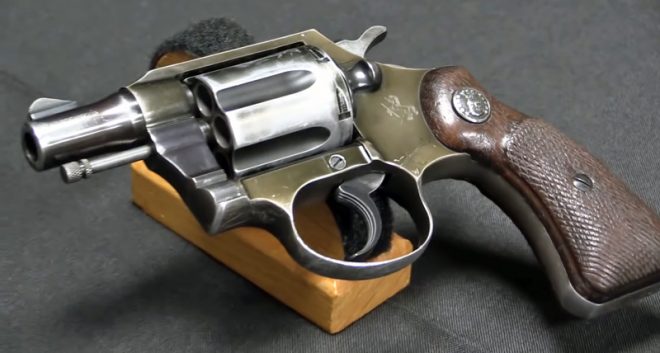
 0
0 
Colt Aircrewman. Image Credit: Rock Island Auctions
Nothing quite conveys the power of close air support as much as the low growl of the A-10 Warthog’s GAU-8 Avenger 30mm cannon, or the buzz of the GAU2/A. Certainly, there are some revolving cannons that have a storied record in the sky. There are a few iconic pilot survival revolvers as well. This week on Wheelgun Wednesday, however, we will be looking at some of the less successful applications of revolvers in aerial combat and pilot survival applications.
As soon as military pilots were taking flight in the earliest scout and combat aircraft, revolvers were taken to the skies. The first recorded incidence of powered flight air combat was, indeed fought with revolvers. In 1913, two Americans flying reconnaissance for the opposing sides in the Mexican Revolution of 1910-1920 fired revolvers at each other. No hits were recorded.
In the initial year of World War I, quite a few pilots were firing all manner of handheld weapons at each other, including revolvers. Webleys, Colts, Smith & Wessons, Labels, and Reichsreolvers all took to the skies. Any air-to-air use of revolvers continued to be completely ineffective in the air combat role. As French pilot Louis Quenalt eventually demonstrated with a 1914 Hotchkiss, the machine gun was, without doubt, the most appropriate tool for the job of air combat. Revolvers did continue to have great value to aircrewmen who landed behind enemy lines, however, and continued in this role into the 21st century.
After the advent of the machinegun in air combat, revolvers became more of a “pilot survival weapon” for many nations when they took to the skies. Certainly, they were prolific and successful in this role. I myself am lucky enough to own a Colt M1917 that was used in this application during the tail end of the Korean War. The weight continued to be a very important calculation in aviation, and lighter weight materials and alloys were sought after by the Air Force for all manner of applications, pilot sidearms being no exception.
First up to the plate with a lightweight revolver for aviators was Colt with their “Aircrewman” in 1950. The Aircrewman was a wonder weight-wise, being an astoundingly light 11-ounce, six-shot .38 with the only steel part remaining to be the barrel. The Air Force was aware of the stresses of ammunition on aluminum, and devolved low pressure M41 “Special Ball” ammunition for use in the new revolvers. Only around a thousand Colt Aircrewman were produced.
Colt Aircrewman
Next up in 1953 with a lightweight pilot’s revolver was Smith & Wesson with their M13 Airweight. Around 40,000 of these guns were made, with civilian models being produced as the M&P Airweight. Still, they suffered from the same fragility as the Colts due to their use of aluminum cylinders and frames. Standard pressure ammunition found its way into too many of the Colt and S&W aluminum revolvers, and the Air Force recalled them from use.
S&W M13 Airweight. Image Credit: Rock Island Auctions
Surviving USAF Colt and S&W Airweight revolvers from that era are extremely rare and command quite a premium, despite being unsafe to shoot with standard pressure ammunition. The USAF, after their mis-step with the ultra-lightweight revolvers, eventually selected the Smith & Wesson Combat Masterpiece, known as the M15. There M15 was paired with high pressure, high velocity PGU-12/B ammunition and had a much better longevity and success, serving the USAF until 2019.
Having always had a passion for firearms, Rusty S. has had experience in gunsmithing, firearms retail, hunting, competitive shooting, range construction, as an IDPA certified range safety officer and a certified instructor. He has received military, law enforcement, and private training in the use of firearms. Editor at Outdoorhub.com

 0
0